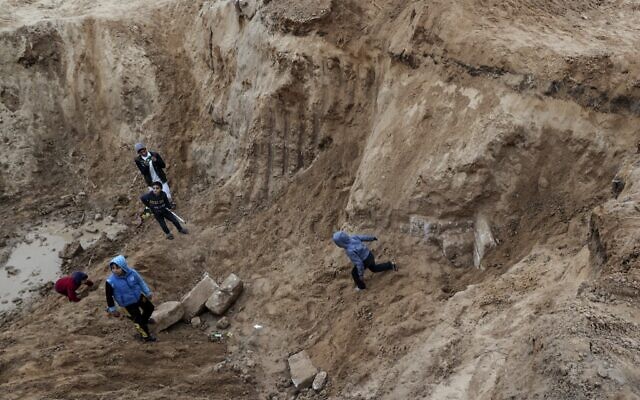In a surprising turn of events during the excavation for an Egyptian-funded housing project in the Gaza Strip, bulldozers unearthed the ruins of a tomb dating back to the Roman era, shedding light on the region’s rich historical tapestry. The discovery, announced by Hamas authorities, has sparked both excitement and concerns regarding the preservation of Gaza’s archaeological heritage.
The Palestinian Ministry of Tourism and Archaeology swiftly responded to the discovery, dispatching crews to seize objects uncovered in the tomb and calling for a halt to construction work. However, an independent archaeologist who examined photos of the site suggested that it might have been a cemetery rather than a singular tomb, adding an intriguing layer of mystery to the find.
Local media reports have indicated instances of looting at the site, with individuals, some using donkey-drawn carts, allegedly taking away artifacts, including casket covers and inscribed bricks. These reports surfaced shortly after residents in the area reported findings from the site a week prior to the ministry’s official announcement.
Gaza’s historical significance, stemming from its location along ancient trade routes between Egypt and the Levant, adds depth to the significance of this discovery. Despite the region’s rich heritage, factors such as Israeli occupation, conflicts, a blockade, and rapid urban growth have posed challenges to the protection of Gaza’s archaeological treasures over the years.
An independent archaeologist, speaking on condition of anonymity due to lack of authorization, noted that the photos of the site suggest a cemetery dating back to the late Roman era to the early Byzantine period, approximately 1,600 years ago. The expert also hinted at the potential presence of a nearby Roman temple or Byzantine church, hinting at a larger historical context waiting to be explored.
The discovery of the Roman-era tomb, amidst the backdrop of modern construction, serves as a poignant reminder of Gaza’s layered history and the ongoing efforts needed to safeguard and preserve its invaluable cultural heritage. It invites further exploration and research into the ancient civilizations that once flourished in this region, offering a glimpse into the past while raising awareness about the importance of preserving our shared human history.
